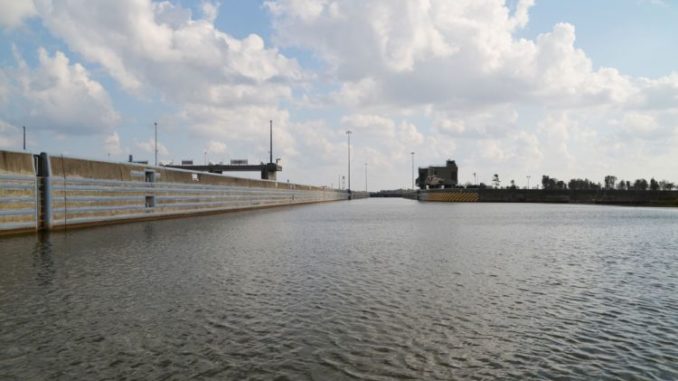
Pools No. 5 and 4 are large complex areas because a variety of habitats and properties were flooded by the 7- to 8-foot rise in water levels that followed damming. The two pools are where Charlie King focuses his Red River guiding efforts, and also where Trent Toups does much of his personal bass fishing.
The top pool, No. 5, includes eight flooded oxbow lakes, flooded river bottoms and the river channel itself, as well as Twelve Mile Bayou that runs through downtown Shreveport.
Pool No. 4 holds nine oxbows and Loggy Bayou, in addition to its flooded river bottoms and the river bed itself.
Remarkably, with three exceptions, all of the waters are open to public access, according to King. But the first one is like a finger stuck in the average person’s eye.
Boats launched at Red River South Marina in Pool No. 5 will be floating in what is called Port Lake. A vast, very bassy-looking flooded stump field stretches to the north. It practically begs for casts.
But it’s private land that has been flooded by the elevated water levels of the Red River system. Known as Cooley Bottom, and named after the owner, it is off-limits to participants in any major and many local tournaments.
It’s easy to recognize by the concrete debris and pipe stakes that have been placed in the deep channels. “You can’t even legally cast into the bottom from public water,” cautioned King.
Another is the barge turn-around that is part of the Port of Shreveport located on the west bank of the river, across from the Red River South Marina. Although the open “lake” is scantly used by tugs and barges since commercial traffic is not heavy, its closure is a safety issue.
The final off-limits spot is down river in Pool No. 4. Called Stevens Lake, it is an oxbow lake located across from the Coushatta Boat Ramp. A slough leads from the river to the lake, but it is posted against trespassing.
Travel from one pool to the next is a simple, although time consuming, process. A boat must be piloted into the open gate of the huge, somewhat intimidating, lock structure.
If the gate is closed, a lock tender on duty 24-7 will open the gates on the near end after closing the other set. He then raises or lowers the water level as necessary, and then the boat may exit the lock through the open gates on the other end.
As a rule of thumb, when water levels are rapidly changing and the water in Pool No. 5 is muddy due to rainfall, move to Pool No. 4, where levels and clarity are more stable.